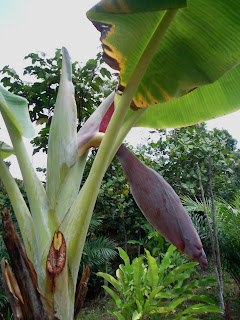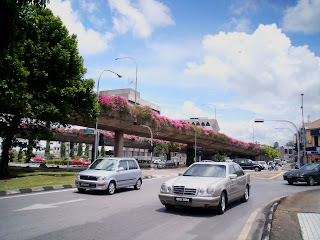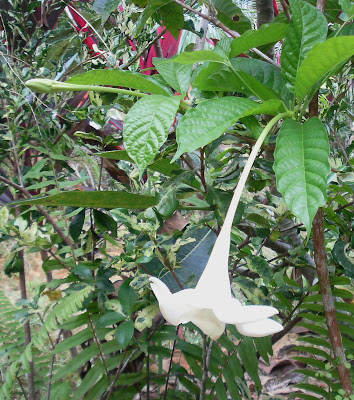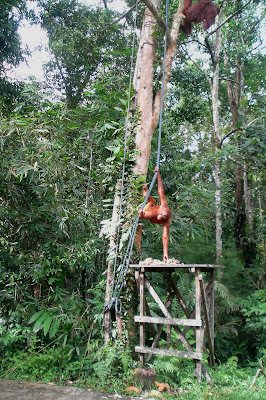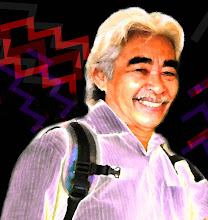In my eco-farm, I have about 12 varieties of bananas that produce fine edible fruits of various tastes and texture. I hope to get more better fruiting varieties in future. Lately, I have been watching the flowering stages of one particular banana 'tree'. I type 'tree' to differentiate the banana from other kind of trees. The mature banana 'trunk' consists of concentric tubular leaf-sheaths. What appears as the banana stem is actually the bases of the leaves fitting closely together. Newer large leaves are formed, each with a longer sheath than the last, until the full length of the plant is reached.
Below are the exciting moments.
From the very end of the stem the flowering spike thrusts upwards.
The terminal spike is enclosed by large overlapping purplish bracts, now bends over.
One bract opens out from the terminal spike to expose the first female flowers.
The female flowers producing the fruits appear in stages and are arranged in a hand-like formation. After successive groups of female flowers have appeared, the remaining terminal spike consisting of closely fit bracts contain only male flowers. The pendulous male tip of the inflorescence is called the 'jantung' in Malay. The jantung is edible and many eat it as salad or cook them as vegetables with coconut milk.
A CU view of the female flowers. Note one free petal ( white in colour) and a gap between it and stamens above. At the base of the stamens nectar is produced oozing a sour-sweet smell, attractive to the bats which lick them normally in the evening hours.( Of course with their claws stuck to the bracts,hanging upside down)
To cut the short story short, I move over to the next tree and to show kind folks around how a bunch of the banana fruits looks in mid air.
Enjoy your bananas.
P.S. In cultivated species, the pollination of female flowers are unnecessary because they acquired the habit of developing without pollination. Anyway, bananas have no seeds except their wild cousins.

